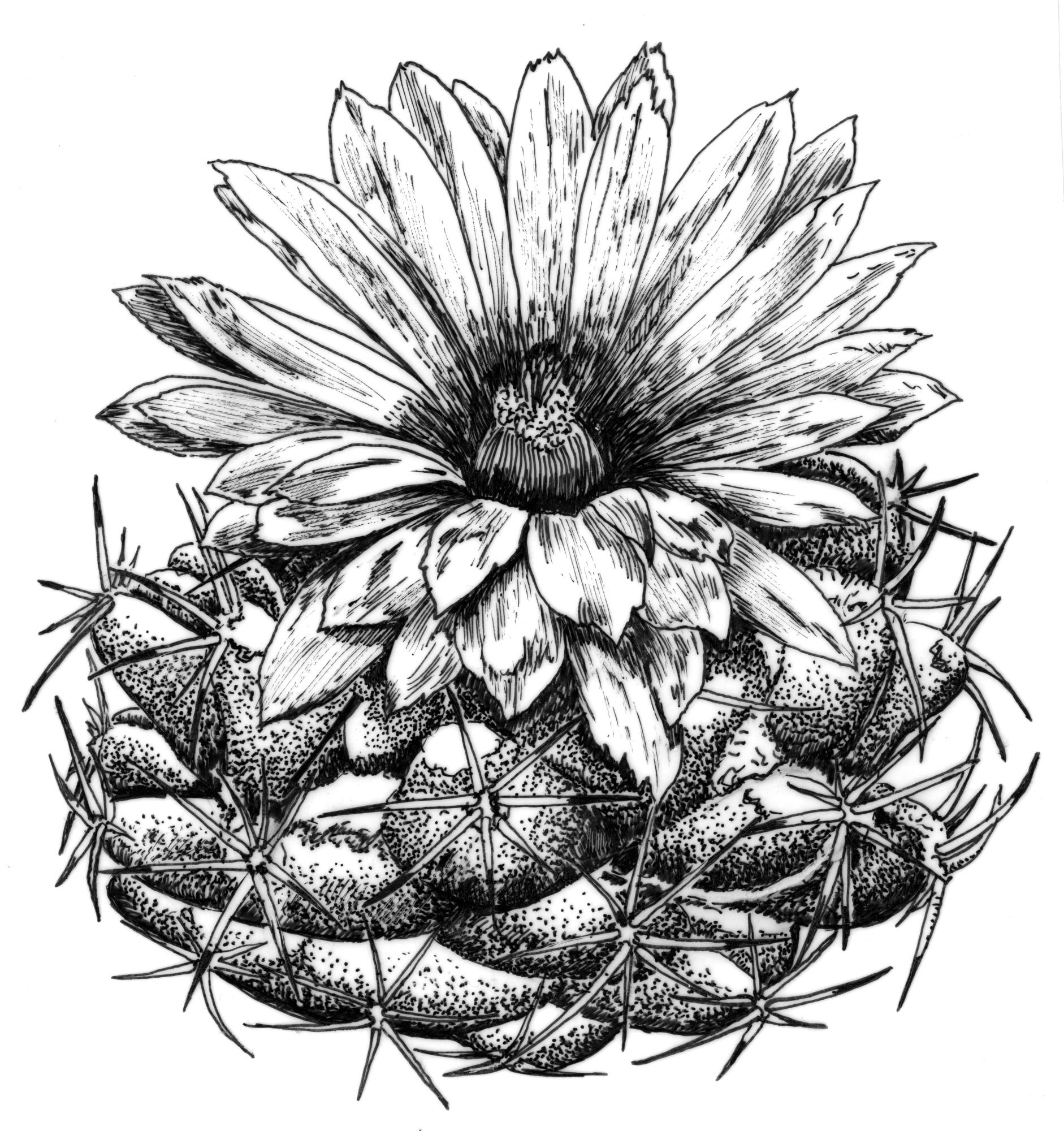
Greek koryphe—top, anthos—flower; referring to the flowers borne at the tip of the body.
Body solitary or in clusters, spherical to cylindrical. Tubercles cylindrical to pyramidal or variously swollen, grooved above on mature plants. Areoles of mature plants with sterile spine-bearing upper part and basal fertile part connected by a narrow, generally felted, groove; young plants with either only upper part or both parts but without the groove. Spines mostly present, sometimes modified into coloured glands. Flowers funnel- or bell-shaped, formed at the base of the furrow in the axil of the tubercles. Pericarpel sometimes with a few small scales. Fruit spherical to ovoid, fleshy, naked, green or yellow, old perianth remnants persistent.
A difficult genus in need of revision and with various misapplied names.
C. vivipara (Nutt.) Britton & Rose is now generally placed in the genus Escobaria which is distinguished from Coryphantha by its fringed perianth segments and absence of areolar glands.
E. vivipara (Nutt.) Buxb. has lilac to white flowers and is also grown as var. deserti (Engelm.) D.R. Hunt which has yellow to brownish flowers. C. calipensis H. Bravo has bright yellow flowers. C. maiz-tablasensis Backeb. has yellowish flowers with 6-7 radiating spines.
Seed; clustering species from offsets.
Superficially similar to Mammillaria but the tubercles with a narrow, generally felted, groove on the upper face and often with a nectary in the axil; flowers relatively large for a tubercle cactus; fruit greenish.
40-45 species from W North America and Mexico.
Source: (1997). Cactaceae. In: . Horticultural Flora of South-eastern Australia. Volume 2. Flowering plants. Dicotyledons. Part 1. The identification of garden and cultivated plants. University of New South Wales Press.
